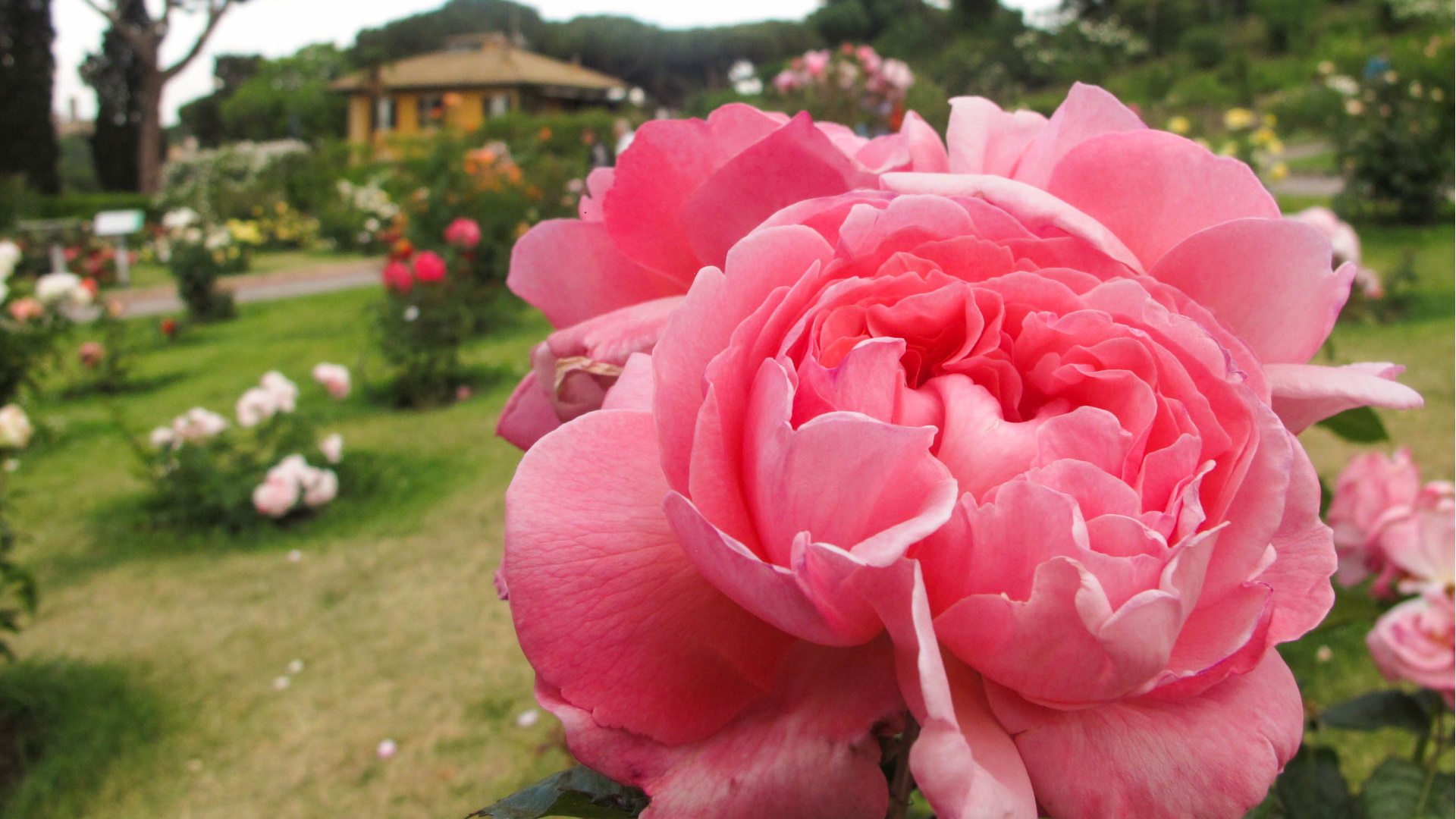
Eine Stadt besteht nicht nur aus Denkmälern, Palästen und Kirchen, sondern auch aus der Reflexion ihrer Geschichten und des Lebens, das sie durchläuft. Das Leben der Römer war seit jeher von Ritualen, Festen, Jahrestagen und Feiern geprägt: ein dichter Kalender mit festen Terminen, die mit ihrer Fülle an Traditionen eine Gelegenheit zur religiösen und zivilen Besinnung, zur Begegnung, zum Austausch und zum Vergnügen boten, Saison für Saison.
Einige dieser Ereignisse haben dem Zahn der Zeit nicht standgehalten oder haben etwas von dem Gefühl des vollkommenen Staunens verloren, das sie den Römern und den zahlreichen Besuchern der Stadt zu vermitteln wussten. Andere hingegen erfreuen sich nach wie vor bester Gesundheit und wurden sogar mit neuen Elementen angereichert. Und wieder andere, obwohl sie erst in jüngerer Zeit entstanden sind, gehören heute zu den modernen und zeitgenössischen „Traditionen“ der Stadt.
Um Rom vollständig zu erleben und sich als Teil seiner Geschichte zu fühlen, erzählen wir Ihnen Monat für Monat von einigen besonderen Tagen und Momenten der Stadt, von heute und von gestern: es sind die am meisten herbeigesehnten oder erwarteten Termine oder auch einfach nur die kuriosesten.
-
Tag der Arbeit, 1. Mai
-
Das „römische Maggetto“, 1. Mai
-
Lemuria, 9., 11. und 13. Mai
-
Der heilige Paschalis Baylon, 17. Mai
-
Die Nacht der Museen, 17. Mai
-
Die Sieben-Kirchen-Wallfahrt, Mai (vor Christi Himmelfahrt)
-
Blühende Azaleen auf der Piazza di Spagna, April-Mai
-
Eröffnung des städtischen Rosengartens, April-Mai
Tag der Arbeit, 1. Mai
Der Tag der Arbeit begann im 19. Jahrhundert als internationaler Kampftag, um die Rechte aller Arbeitnehmer zu bekräftigen und sozialen Fortschritt zu erreichen. In Rom ist einer der festen Termine an diesem Tag seit 1990 das von den drei großen italienischen Gewerkschaften organisierte Musikfestival, das größte und historischste kostenlose Konzert in Italien. Der lange Marathon der Live-Musik findet traditionell auf dem Platz vor der Basilika San Giovanni in Laterano statt und beginnt am frühen Nachmittag, wenn zahlreiche italienische und internationale Sänger und Bands auf der Bühne stehen. Das „Concertone“ (das große Konzert), wie es oft genannt wird, um seine Größe zu unterstreichen, wird von der RAI live im Fernsehen, im Radio und auch per Online-Streaming übertragen. Aufgrund von Renovierungsarbeiten auf der Piazza di Porta San Giovanni in Laterano wird das „Concertone“ 2024 an einen anderen Ort voller Geschichte und Charme verlegt: den Circus Maximus.
Das „römische Maggetto“, 1. Mai
Der Triumph des Frühlings und der Natur. Schon lange vor der Einführung des Tages der Arbeit wurde der Eintritt in den Monat Mai als ein wichtiger Übergang empfunden, der mit allen Ehren gefeiert werden sollte. Im alten Rom waren die Tage zwischen Ende April und dem 3. Mai dem Fest der Floralia oder Ludi Florales gewidmet. Zu Ehren der Göttin Flora, der antiken italischen Gottheit des Frühlings, fanden Theateraufführungen und Spiele verschiedener Art statt, begleitet von einer Atmosphäre großer Fröhlichkeit, Scherzen, Festmahlen und Trankopfern. Die Jahrhunderte vergingen, aber in der volkstümlichen römischen Tradition war der Wein, vorzugsweise rot und aus den Castelli, weiterhin das gemeinsame Merkmal der Feierlichkeiten zum ersten Mai, der zum Tag schlechthin für Ausflüge, so genannte „Scampagnate“ (Picknicks) und Mittagessen mit Freunden und Verwandten wurde. Apropos Essen: Während des so genannten „Maggetto romano“ sind zwei Lebensmittel seit jeher unverzichtbar: frische Saubohnen und römischer Pecorino-Käse, eine scheinbar einfache, aber unglaublich reiche Geschmackskombination. Und um den Faden der Geschichte wieder aufzunehmen, wurden bereits während der Floralia die Saubohnen zusammen mit anderen Hülsenfrüchten handvollweise unter das Volk geworfen, um Fruchtbarkeit und Überfluss zu wünschen.
Lemuria, 9., 11. und 13. Mai
Die christliche Tradition verbindet den Monat Mai mit der Jungfrau Maria und den üppigen Farben des Frühlings, aber im alten Rom war das ganz anders. Der fröhlichen und festlichen Atmosphäre von Floralia (zwischen Ende April und Anfang Mai) und Rosalia (am Ende des Monats) standen Tage des Schreckens gegenüber, an denen Eheschließungen verboten und die Tempel der Stadt geschlossen waren, weil die Toten frei in der Welt der Lebenden umherzogen. Im römischen Kalender waren der 9., 11. und 13. Mai die Tage, die den Lemures, den Geistern der Nacht, den ruhelosen Seelen der vorzeitig oder gewaltsam verstorbenen Vorfahren, vorbehalten waren. Der Überlieferung nach waren dies die ältesten Totenfeste, die in Rom gefeiert wurden. Romulus selbst hatte sie eingeführt, um den zornigen Geist seines ermordeten Zwillings Remus zu besänftigen. Um Mitternacht, während das Haus in Stille und Dunkelheit gehüllt war, ging das Familienoberhaupt barfuß durch das Haus und blickte sich nicht um. Er warf neunmal schwarze Bohnen hinter sich und wiederholte eine Reihe von Beschwörungsformeln, um die Geister zur Tür zu begleiten. Das heidnische Fest von Lemuria wurde am 13. Mai 610 endgültig verboten, als Papst Bonifatius IV. das Pantheon der heiligen Jungfrau und anderen Märtyrern weihte. Etwa ein Jahrhundert später, am 1. November, weihte Papst Gregor III. eine Kapelle im Petersdom den Reliquien aller Heiligen, Märtyrer und Bekenner, und die Feier mit anschließendem Totengedenken wurde auf dieses Datum verlegt, das mit dem keltischen Fest Samhain (Halloween) zusammenfällt. Im 18. Jahrhundert wurde der Feiertag teilweise wieder ins Gedächtnis gerufen, als der Naturforscher Linnaeus die Tiere, die Madagaskar symbolisieren, aufgrund ihres großen Blicks und ihrer nächtlichen Gewohnheiten „Lemuren“ nannte.
Der heilige Paschalis Baylon, 17. Mai
In der persönlichen Geschichte des spanischen Mönchs und Mystikers Paschalis Baylon, der bereits am 17. Mai 1592 im Geruch der Heiligkeit starb, deutete nichts auf die besondere Volksfrömmigkeit hin, die ihm in Rom und Süditalien ab dem 18. Um die Mitte dieses Jahrhunderts wurde die alte Kirche in Trastevere, die ursprünglich nur den vierzig Märtyrern gewidmet war, um den Namen des spanischen Heiligen erweitert. Der Sakralbau wurde fortan als „Kirche der Jungfrauen“ bekannt. Vielleicht nur wegen einer trivialen und etwas gedehnten Assonanz (zwischen Baylon und „donne“, d.H. Frauen) galt der Heilige als Beschützer der Frauen, insbesondere derjenigen, die auf der Suche nach einem Ehemann waren. Junge und nicht mehr ganz so junge Frauen drängten sich vor allem am Festtag des Heiligen in der kleinen Kirche und rezitierten das bekannte Gebet in Form eines Kinderreims: „San Pasquale Baylonne, protettore delle donne, trovatemi un marito, bianco rosso e colorito, come voi. Ma tale quale a voi, o glorioso san Pasquale“, „Heiliger Paschalis Baylon, Beschützer der Frauen, bitte finde mir einen Mann, weiß, rot und bunt, wie du. Aber einen wie dich, oh glorreicher Heiliger Paschalis“. Wenn Sie es versuchen wollen, denken Sie daran, dass dem Gebet eine Novene vorausgehen muss, um wirksam zu sein.
Die Nacht der Museen, 17. Mai
Es ist mittlerweile ein traditioneller und beliebter Termin im römischen Mai. Seit 2009 hält die Stadt Rom an der Nuit Européenne des Musées fest und organisiert eine festliche Nacht in der Stadt, die der Kunst und der Unterhaltung gewidmet ist. Jedes Jahr, am Samstagabend, der dem Internationalen Museumstag (ICOM) am 18. Mai am nächsten liegt, bleiben während der Museumsnacht die Räume des Sistema Musei di Roma Capitale und einige der wichtigsten Kultureinrichtungen der Stadt ausnahmsweise von 20 Uhr bis spät in die Nacht für das Publikum geöffnet, um den Römern und Touristen Träume und Emotionen außerhalb der Öffnungszeiten zu bieten. Bis zwei Uhr nachts und zum symbolischen Preis von einem Euro (außer wo anders angegeben) können Sie die ständigen Sammlungen und Wechselausstellungen der Museen bewundern und ein reichhaltiges Programm an Konzerten, Musik-, Theater- und Tanzaufführungen besuchen.
Die Sieben-Kirchen-Wallfahrt, Mai (vor Christi Himmelfahrt)
Eine etwa 20 km lange Strecke zu Fuß durch das christliche Rom. Die Pilgerreise zu den Sieben Kirchen, die im 16. Jahrhundert vom Heiligen Philipp Neri ins Leben gerufen wurde (genau am Faschingsdonnerstag 1552), ist eine der ältesten römischen Traditionen, die möglicherweise bis ins Mittelalter zurückreicht. Als Alternative zu den spöttischen und unorganisierten Feiern des römischen Karnevals schlug Philippus vor, die heiligsten Stätten Roms in einer Art „geistlichem Karneval“ zu besuchen. Der Rundweg berührte die wichtigsten Kirchen der damaligen Stadt: die Basiliken San Pietro, San Paolo fuori le mura, San Sebastiano (seit dem Jubiläum von 2000 auch durch die Wallfahrtskirche Madonna del Divino Amore ersetzt), San Giovanni in Laterano, Santa Croce in Gerusalemme, San Lorenzo fuori le mura und Santa Maria Maggiore. Im Laufe der Zeit wurde die Wallfahrt für die Römer zu einem festen Termin, der im Mai vor dem Fest Christi Himmelfahrt, 40 Tage nach Ostern, begangen wurde. Der letzte Besuch wurde mit einem Mittagessen gefeiert, das zu einem ausgiebigen Gelage werden konnte, um dem lockeren Gebot, „die sieben Kirchen und die vierzehn Tavernen“ zu besuchen, nachzukommen. Heute findet die Wallfahrt zweimal im Jahr, im September und im Mai, kurz vor dem Fest des heiligen Philipp Neri (26. Mai), in kollektiver Form bei Nacht statt, unter der Leitung eines Paters der Kongregation des Oratoriums des heiligen Philipp Neri.
Blühende Azaleen auf der Piazza di Spagna, April-Mai
Der Frühling in Rom ist kein Frühling ohne die Azaleen, die die Spanische Treppe aus dem 18. Jahrhundert schmücken und färben. Die Tradition der kapitolinischen Blumenausstellung reicht bis in die 1930er Jahre zurück. Die Azaleen wurde zunächst im Park der Villa Aldobrandini eingerichtet, zog aber 1952 dauerhaft auf die Piazza di Spagna um. Etwa 250 weiße und lilafarbene Azaleen sind für die Blumenschau verantwortlich. Während des restlichen Jahres befinden sie sich im Semenzaio di San Sisto, der Baumschule der Stadt. Die Dauer der Ausstellung (etwa ein Monat) hängt von den Witterungsbedingungen ab, die die Blütezeit der Azaleen verkürzen und damit ihre Rückkehr in die alten Baumschulen beschleunigen können.
Eröffnung des städtischen Rosengartens, April-Mai
Über tausend Rosensorten für ein einzigartiges sensorisches Erlebnis. Der Roseto comunale - städtische Rosengarten wurde 1950 an den Hängen des Aventinhügels, direkt oberhalb des Circus Maximus, eröffnet. Im 17. Jahrhundert befand sich an gleicher Stelle der sogenannte „Orto degli Ebrei“. In der Regel ist er von Ende April bis Mai zur Frühlingsblüte und im Oktober zur Herbstblüte für die Öffentlichkeit zugänglich. Neben den Rosen mit ihren Düften und Farben bietet der Roseto einen atemberaubenden Blick, der vom Palatinhügel über den Glockenturm von Santa Maria in Cosmedin, die Kuppel der Synagoge und den Vittoriano bis hin zum Observatorium des Monte Mario reicht.
Juni in Rom. Verabredung mit der Tradition (heute wie in der Vergangenheit)
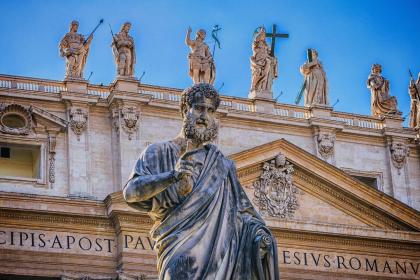
Juli in Rom. Verabredung mit der Tradition (heute wie in der Vergangenheit)
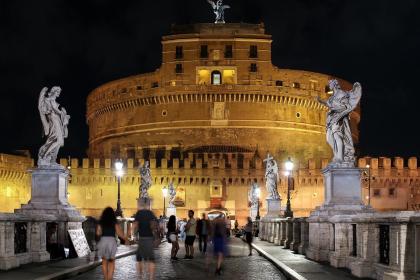
Saubohnen und Schafskäse zum Maifeiertag

Wine drinking culture in Rome

Castelli Romani
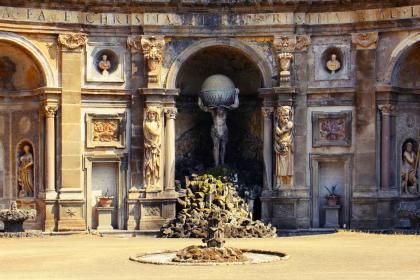
 Condividi
Condividi
Basilika San Giovanni in Laterano
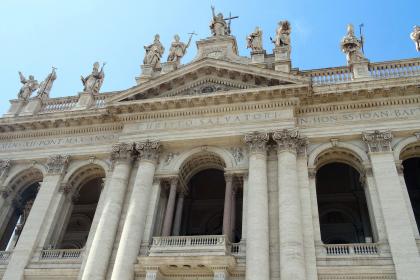
 Condividi
Condividi
Kirche Santa Maria in Vallicella (Chiesa Nuova) und stanze di San Filippo Neri
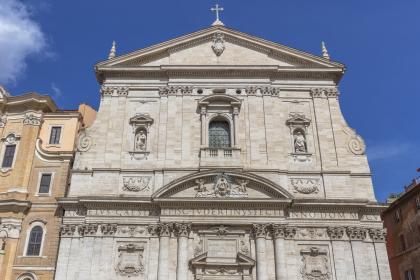
 Condividi
Condividi
Roms Rosengarten
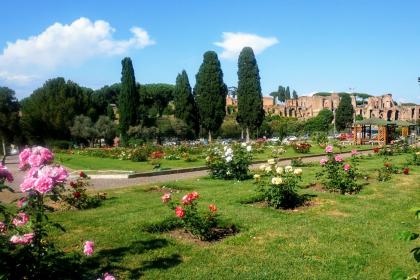
 Condividi
Condividi











































